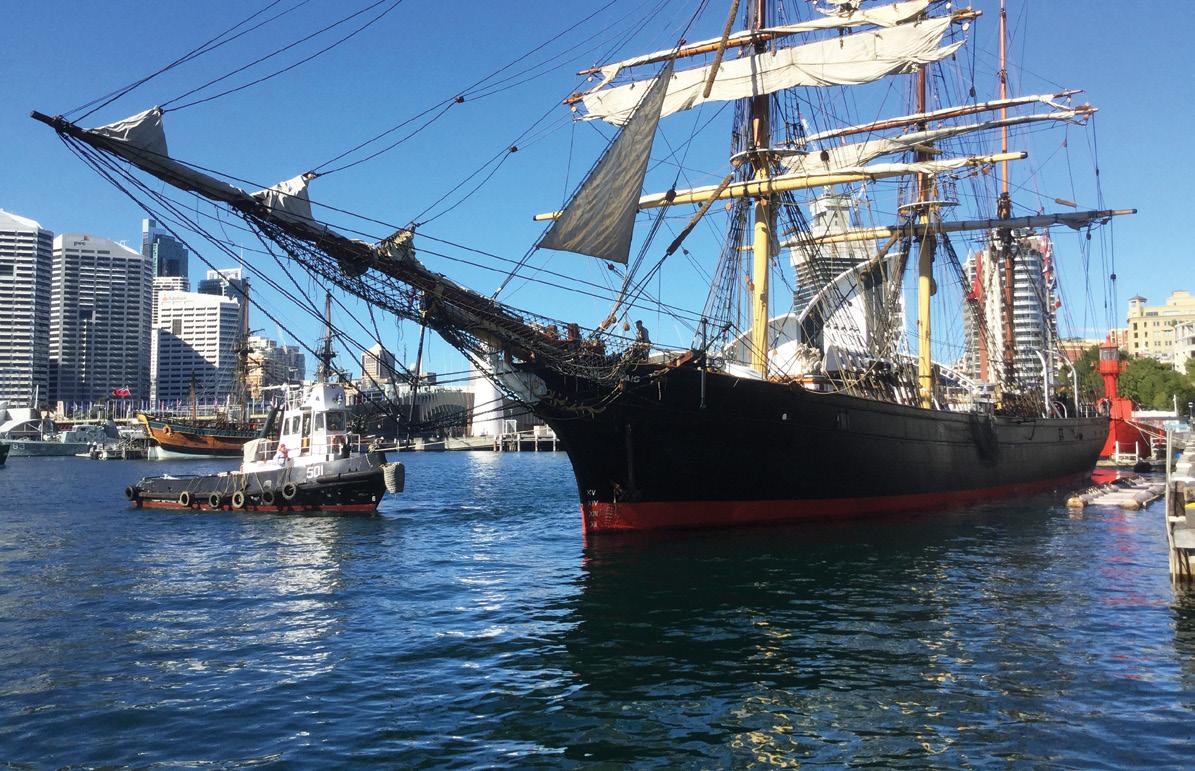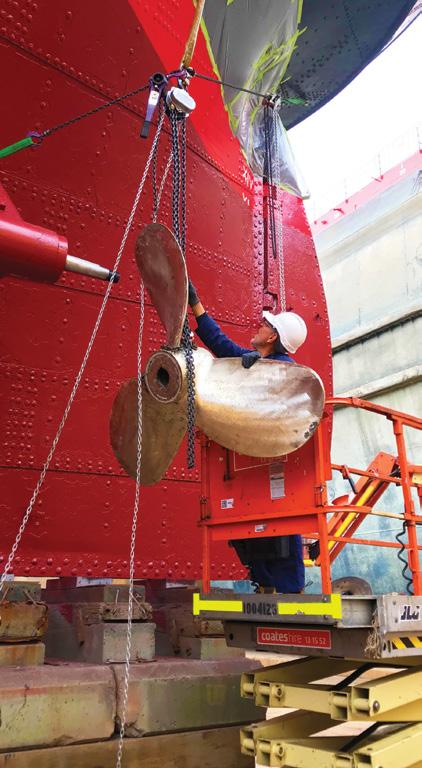
4 minute read
Heritage fleet delivers safety system over the cloud
Aboard the nine vessels of the unique Sydney Heritage Fleet, the cloud has become the perfect stowage space for safety management systems.
By Ron Aggs
Advertisement
Still buried under a modern mountain of paper eons after officers’ quarters stored the quills, ink, parchment and logbooks, fleet Operations Manager Tim Drinkwater and volunteer staff needed a better way to assess and manage risk.
‘Operating the heritage fleet on Sydney Harbour is extremely challenging,’ Tim said.
The nine fully restored and operational vessels, ranging in age from the 1870s to the 1960s represent a priceless investment. Five are more than 100 years old.
‘Consequences of events like collision or fire—while unlikely—are potentially catastrophic and carrying passengers on heritage fleet vessels is high risk,’ Tim said.
‘At toolbox meetings every morning I kept on fossicking through piles of paper, so we decided it would be far more efficient and environmentally friendly to access an electronic system,’ he said.
At that point, clouds took on meaning beyond reading the weather, as he and the heritage fleet volunteers collaborated with two Australian companies, Ocean Time Marine and Atlassian.
Together they developed a computer network comprising six synced tablets at various fleet locations, sharing a common account and email address, backed up in the cloud.
Ocean Time Marine donated resources and software called Dashboard for the fleet to trial.
The program collates and centralises all maritime and WorkCover certificates and safety management information and sends reminders when certificates are due for renewal.
Ocean Time Marine’s work is guided by AMSA requirements. They are also accredited marine surveyors. Atlassian’s Jira software caters to all the fleet’s evolving risk assessments of restoration and maintenance on vessels. It saves the information on the fleet’s tablets and phones and backs it up in the cloud.
‘Crew members and the designated person ashore have access and the ability to check records from anywhere—it’s brilliant,’ Tim said.
He recalled a situation on the first offshore overnight charter of the James Craig, built in 1874.
‘The vessel was eight nautical miles off the North Head of Sydney Harbour and the engineers had entered the pre-sail checks and voyage logbook on Dashboard, then the chief engineer saved them to the cloud,’ he said.
‘At that time, I was at home, able to read the main engine and auxiliary vital instrumentation recordings.’
The James Craig is the pride of a fleet restored, maintained and operated by the volunteers, working since 1965 to preserve the ships, artefacts, literature and art that trace Sydney’s maritime history.

Risk technology: Sydney Heritage Fleet assess nine vessels using Atlassian’s Jira software then store this essential data in the cloud
Images supplied


The fleet is exceptional for the fact that nowhere else in the world can people see and sail on such a collection of historic vessels.
Before COVID-19, the not-for-profit enterprise could normally call on between 55 and 70 volunteers for workshop restoration, maintenance and on-board crewing.
‘They’re from all walks of life, adapting to the various skills required,’ Tim said.
‘Fitters and turners, plumbers, shipwrights, doctors, IT specialists and solicitors who want to become crew, a stoker, a second or third engineer, or chief engineer.’
As part of the risk matrix, the vessels’ masters run strict training programs, either alongside, offshore or in the harbour.
According to Tim, all the masters are very experienced and have either come from the industry and been there a long time, or retired then come back and trained and started again.
As well as alertness to emergencies like fire, crew also learn how they would step in to take care of an incapacitated master, and navigate the vessel back to bring it alongside.
Vessels are kept at Rozelle where restoration is done. Administration is at Wharf 7 at Pyrmont where James Craig is also berthed. There is a workshop there as well, for maintenance.
Whenever restoration and maintenance are planned, the day’s tasks are discussed each morning—for example, heavy construction work in confined space, hot-work permits, work method statements, crane work safety and qualification checks.
Risks associated with the operation are reviewed daily. Everyone is aware of the content and signs off electronically and the information is saved on the tablets and uploaded to the cloud.
Facemasks became de rigueur where workspace numbers—including the mess, which usually accommodated up to 30 people—were reduced to just a few until COVID-19 restrictions eased.
‘As we open the boats for the volunteers to come back in stages one, two and three, it’s a bit of an unknown how that’s going to be managed,’ Tim said in mid-May.
With the world’s airlines grounded, discussion at morning toolbox meetings is about how to encourage more domestic tourists to feel the ocean spray on their faces instead, but it’s not that simple.
In October Tim and the team were still working to maintain the priceless vessels at the Rozelle Shipyard in line with their registered COVID-Safety Plan, but commercial sailing was still further down the track.








